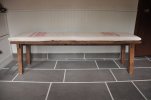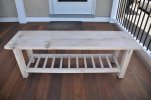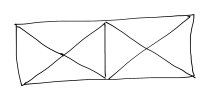DafyddElvy
1:22.5 & 15mm Scale Trams, , NG Steam Railways
I have a piece of solid wood 300mm x 95mm x 20mm, which has not entirely unexpectedly warped along its length.
The piece of wood was cut from the best and flattest length I have to form the base for a jig, on which I will assemble tram trucks.
Q) I have had said piece of wood for about 2 years and it has been kept in an indoor environment, can I now assume that the piece of wood has fully dried out and if I plane it flat it won't just warp further.
My knowledge of wood is as low as I think any persons could be, I know it comes from trees and I know it burns, I don't want to start making my jig only to find the piece of wood warps any the jog making was a failure, thanks
The piece of wood was cut from the best and flattest length I have to form the base for a jig, on which I will assemble tram trucks.
Q) I have had said piece of wood for about 2 years and it has been kept in an indoor environment, can I now assume that the piece of wood has fully dried out and if I plane it flat it won't just warp further.
My knowledge of wood is as low as I think any persons could be, I know it comes from trees and I know it burns, I don't want to start making my jig only to find the piece of wood warps any the jog making was a failure, thanks









